
Ponds are crucial habitat for a great diversity of plants and animals
© Stuart Jackson-Carter/www.sjcillustration.com
Pond life: facts about pond habitats, plants and animals
Sylvia Myers and Lisa Hendry
Life (as far as we know) started in water and is still very much dependent upon it.
Find out about the animals and plants that rely on ponds, the history and key features of this habitat, and why we need to protect and create more ponds.
Research suggests that ponds support more freshwater life than any other UK freshwater habitat.
Ponds with a range of features tend to host a greater variety of wildlife. Features can include sloping 'beaches' and muddy margins, shallow open water, deeper sections, vegetation around the edges and areas with overhanging trees. But even tiny freshwater ponds will attract some wildlife.
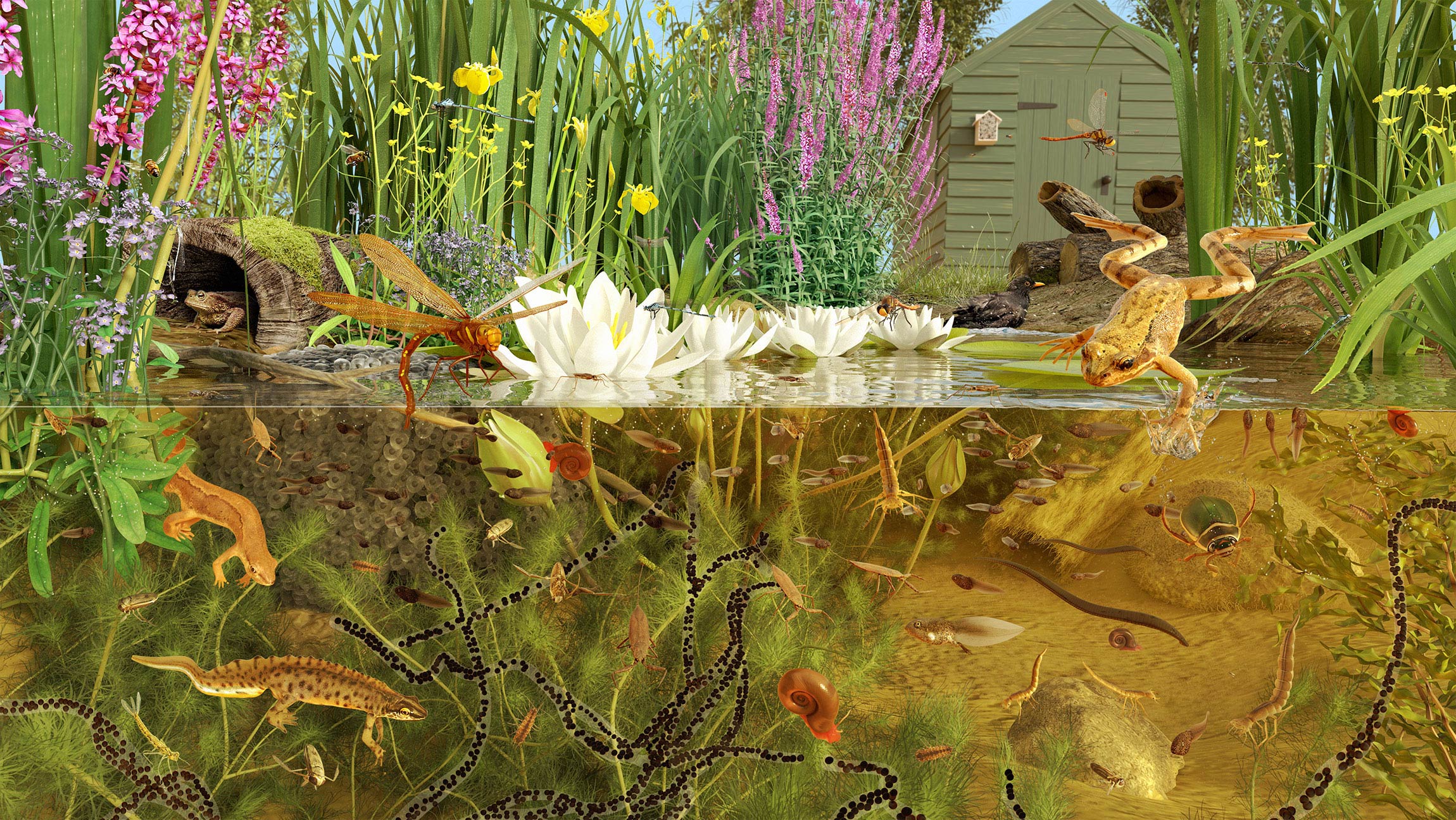
Ponds support a wide range of wildlife - from creatures that permanently live underwater or spend the first stage of their lives there, to other species that visit to feed, drink, bathe and breed
© Stuart Jackson-Carter/www.sjcillustration.com
Pond life: the animals that rely on this habitat
Some creatures spend their whole lives submerged in a pond, such as freshwater hoglice that have gills to aid their aquatic lifestyle. But ponds are typically low in dissolved oxygen, so many freshwater insects breathe air and can fly between ponds. Water scorpions use their tails like snorkels to draw air from the surface and great diving beetles carry bubbles under their wings.
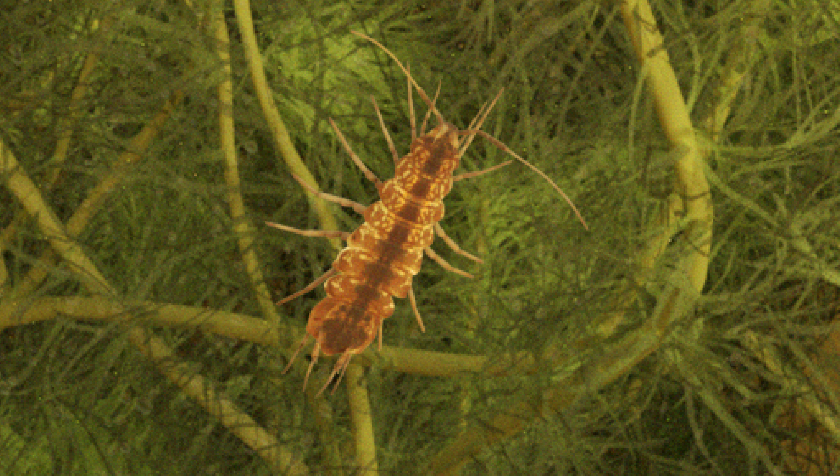
The two-spotted water hoglouse (Asellus aquaticus) is closely related to woodlice but lives an entirely aquatic life, crawling around among plants and mud. It feeds on decaying animal and plant matter.
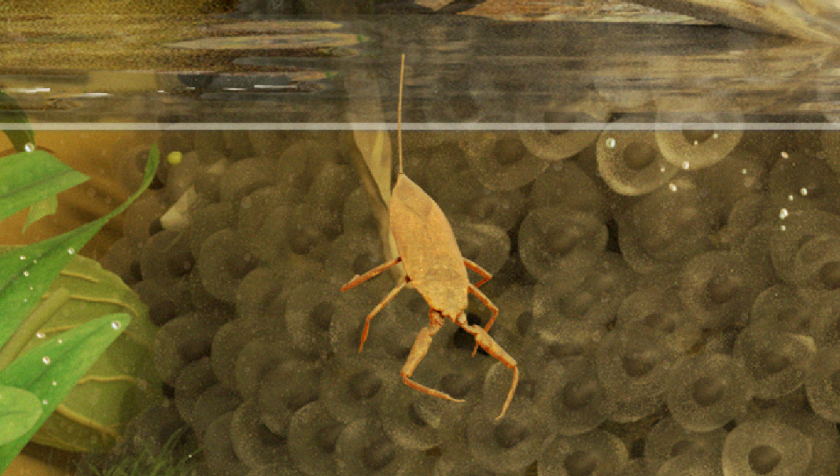
The water scorpion (Nepa cinerea) waits among dead leaves to ambush prey such as tadpoles, grabbing them with its pincer-like front legs. It uses its 'tail' as a breathing tube, poking it out of the water.
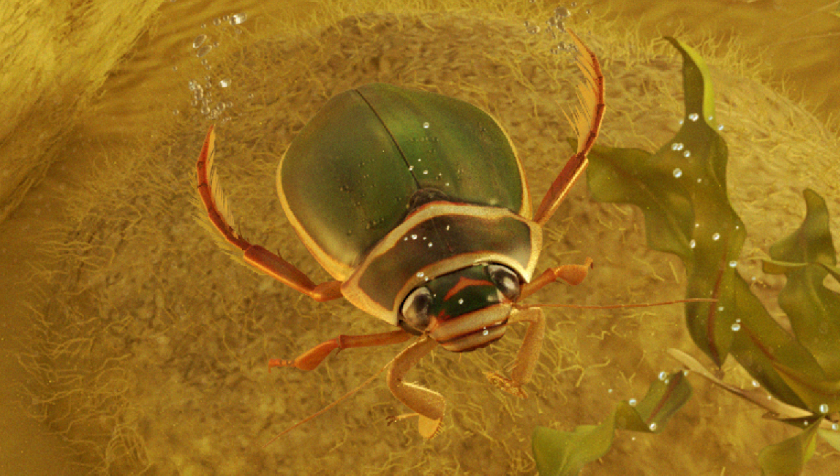
At about three centimetres long, the great diving beetle (Dytiscus marginalis) is one of the UK's largest beetles. Although it is aquatic, it sometimes leaves the water and flies off to settle in a new pond.
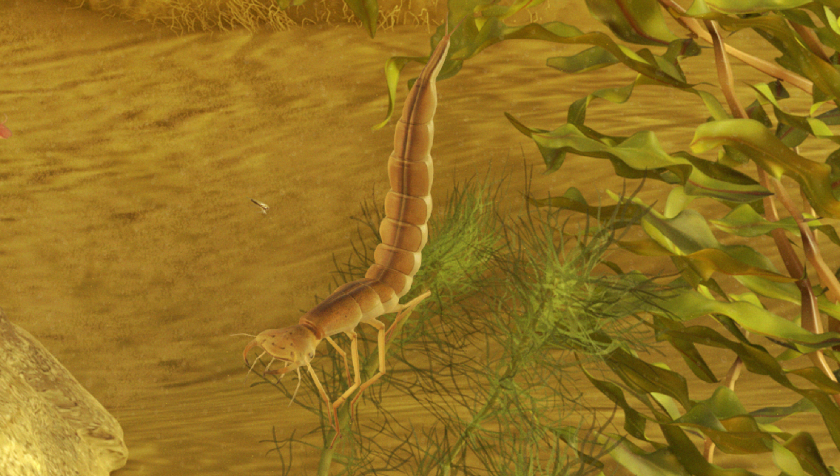
Like the adults, great diving beetle larvae are voracious predators. They can attack other aquatic insects, tadpoles and even newts. In late summer, they leave the water to pupate in nearby damp soil. Once transformed into adults, they remain buried, returning to the water in spring.
Other animals spend their larval stages in ponds, for example dragonflies and damselflies. These larvae are ferocious predators which have extendable hinged jaws that can shoot out to catch unsuspecting prey.
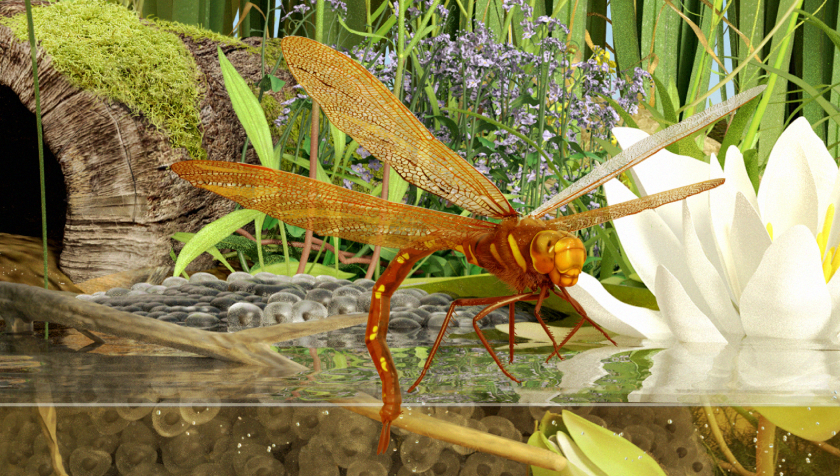
Brown hawker dragonflies (Aeshna grandis) lay eggs into rotting wood or partially submerged branches. They use a blade-like ovipositor to insert the eggs below the wood's surface for protection from predators and drying out.
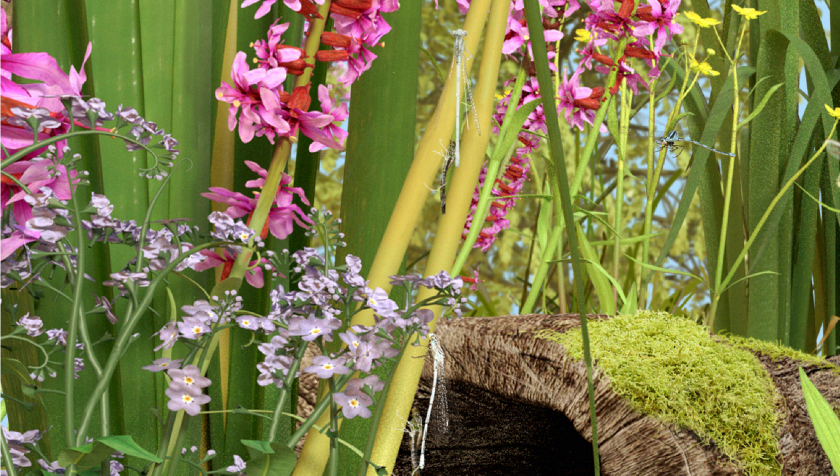
The azure damselfly (Coenagrion puella) spends its larval stages underwater, before climbing an emergent plant and breaking out of its larval skin as an adult, leaving an empty exuvia.
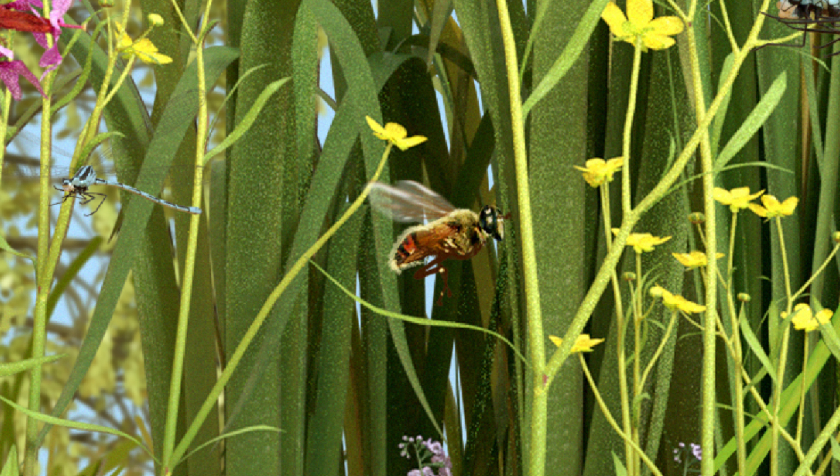
Like many hoverflies, the common drone fly (Eristalis tenax) starts life as a larva in the pond. The larvae are often referred to as rat-tailed maggots due to their characteristic 'tail', which acts like a snorkel, allowing the creature to breathe air. As an adult, this hoverfly is an important pollinator.
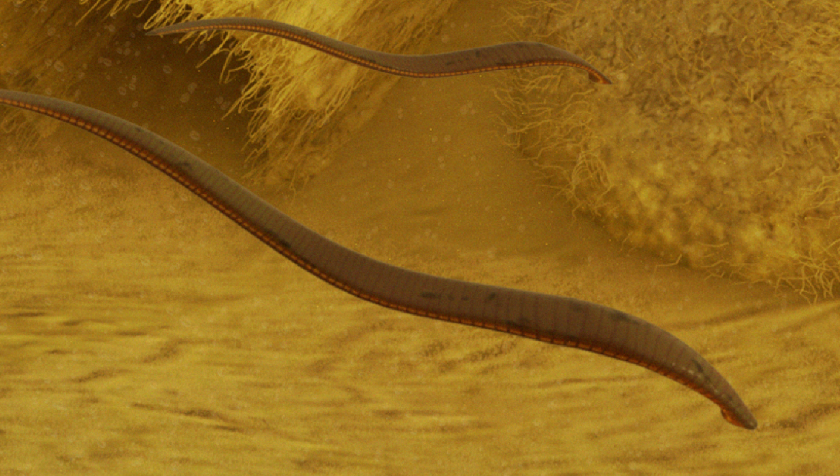
Despite their name, horse leeches (Haemopis sanguisuga) can't bite through mammalian skin and don't suck blood - instead they hunt softer invertebrates such as slugs, snails and earthworms.
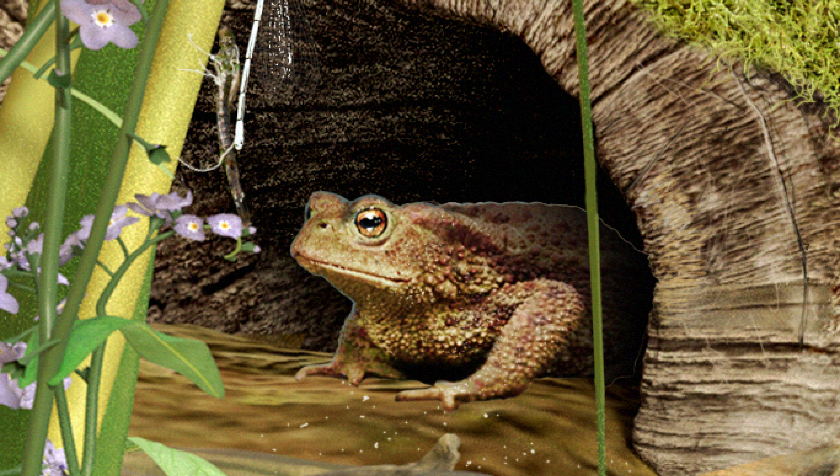
A common toad (Bufo bufo)
© Stuart Jackson-Carter/www.sjcillustration.com
Amphibians spend their larval stages in a pond and then as adults move between land and water, often spending the day hidden under logs.
Some amphibians, such as common toads, hardly visit ponds except to lay eggs, whereas smooth newts spend much of early summer in a pond before creeping out to hunt invertebrates in long vegetation.
The newts and toads hibernate out of the water, under logs and stones. Frogs also usually hibernate on land, but some will spend winter at the bottom of deep ponds. They like to bury themselves under soil and debris.
Did you know?
One third of all UK ponds are thought to have disappeared in the past 50 years or so. This has had an enormous effect on wildlife, particularly frogs, toads and newts, which need ponds to breed. If ponds disappear, so do these popular amphibians.
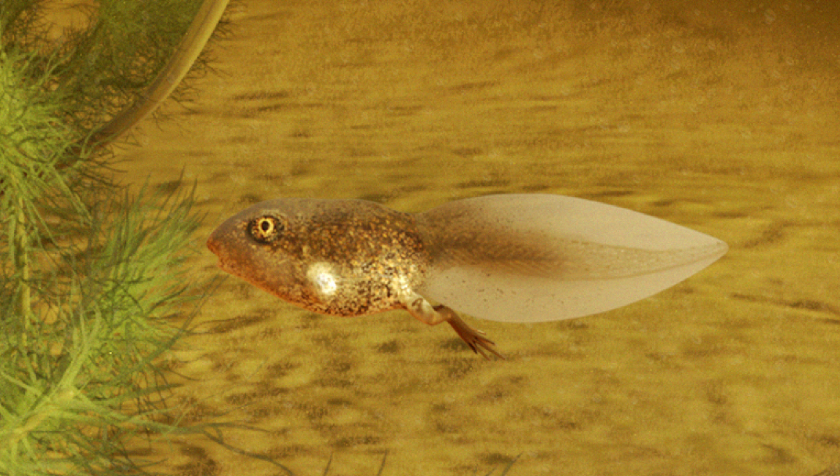
Common frog tadpoles (Rana temporaria) can sense changes in water level and will develop faster if a pond is in danger of drying up.
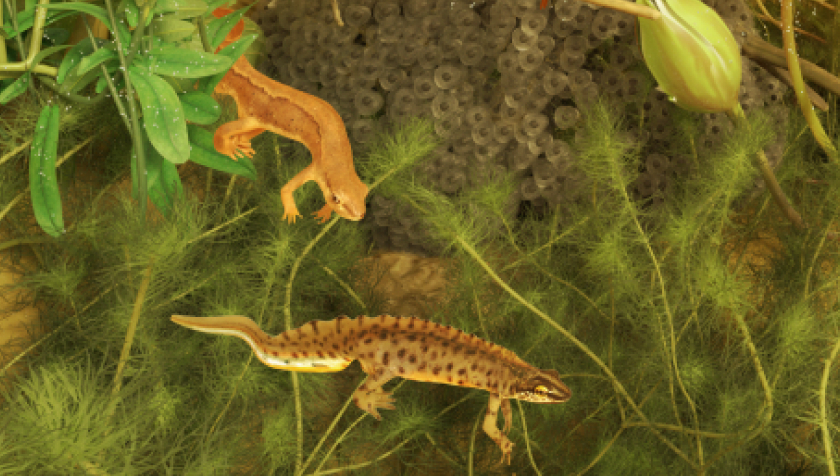
The smooth newt (Lissotriton vulgaris) carefully wraps each of its eggs in a submerged leaf. The soft leaves of water forget-me-not (Myosotis scorpioides) are perfect for this.
Other animals use ponds for feeding, drinking, bathing or nest-building. For example, the red mason bee collects mud on the side of ponds to build divides between the egg chambers of its nest. Bats are attracted to ponds as a source of freshly emerging and breeding insects to feast upon. Larger animals such as badgers, foxes and hedgehogs will drink from ponds, if they can reach the water, and birds love to splash about.
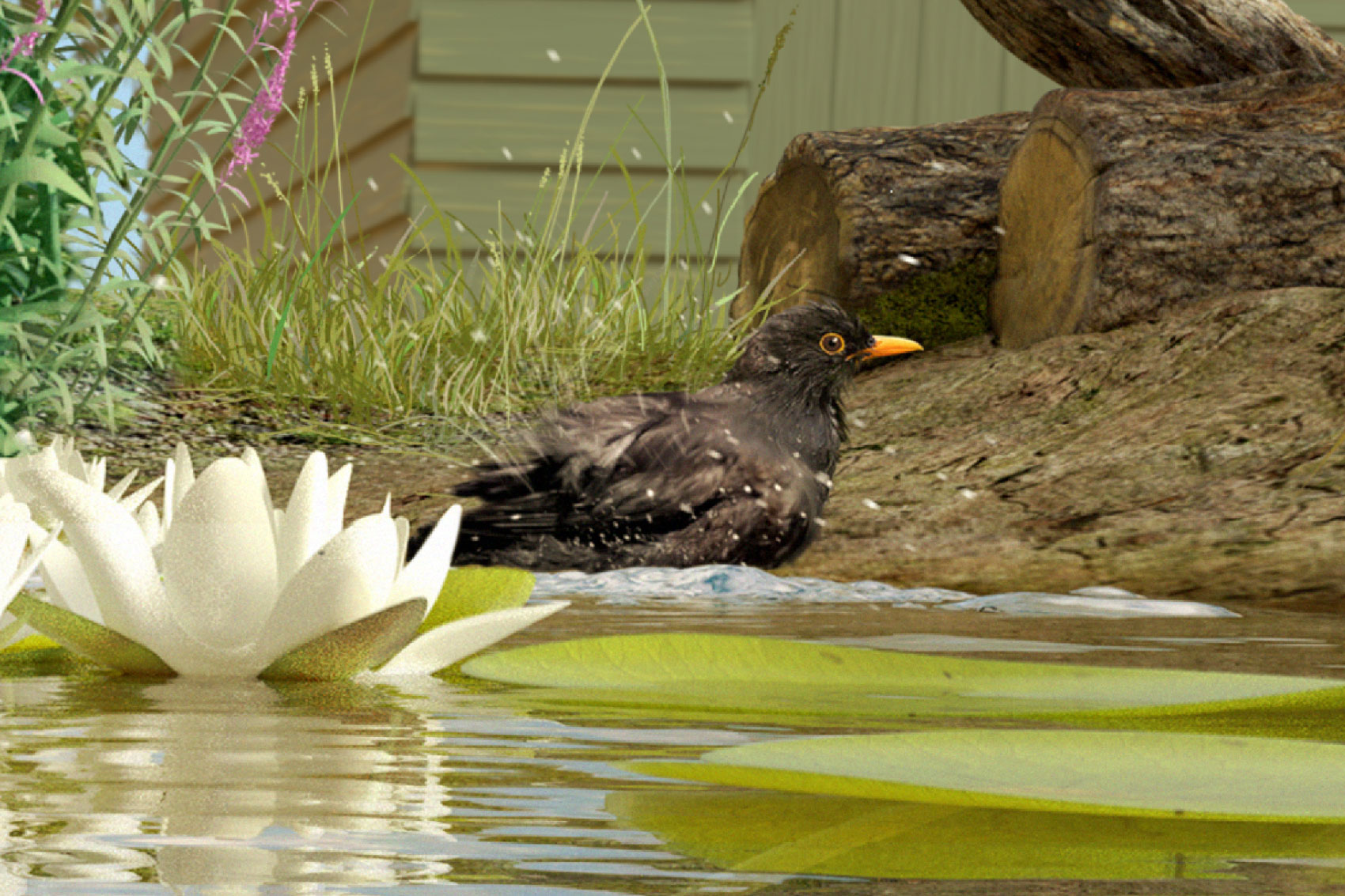
Many birds use the shallow edges of a pond as a bathing spot. Blackbirds (Turdus merula) are particularly keen garden pond bathers.
© Stuart Jackson-Carter/www.sjcillustration.com
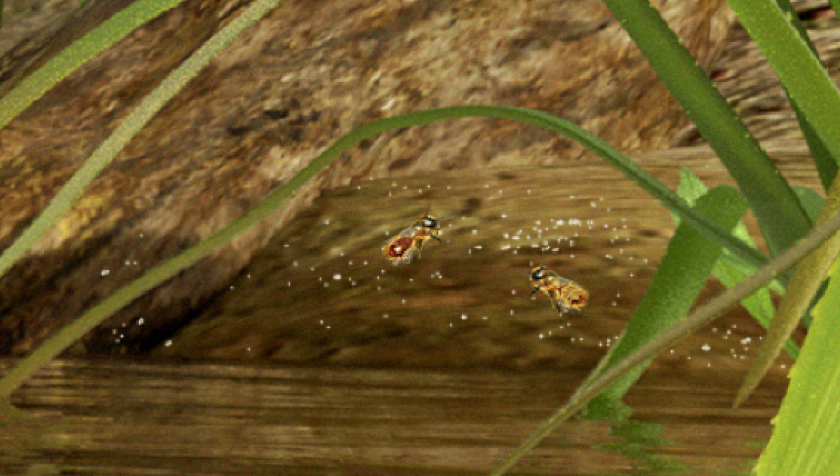
Red mason bees (Osmia bicornis) collect the mud around ponds to seal eggs and pollen into nesting tubes. This solitary bee can often be found using insect hotels.
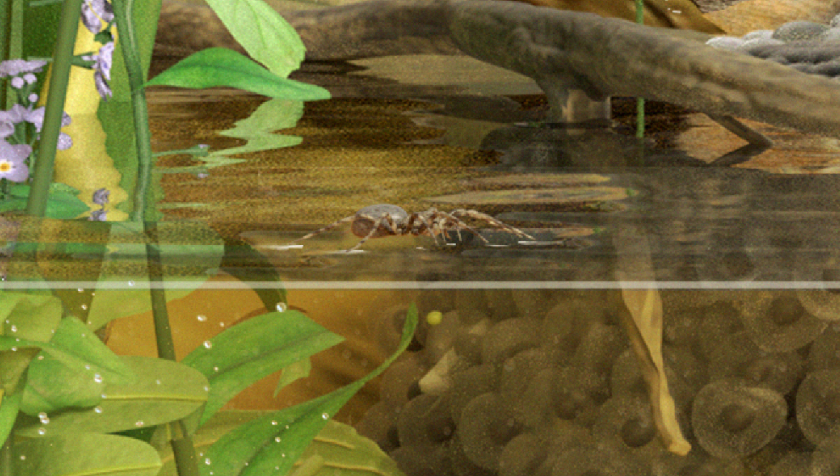
Wolf spiders (Pardosa amentata) hunt on the surface of a pond using surface tension, waiting for the emergence of adult insects that started their lives in the water.
Wildlife typically found in and around garden ponds
Amphibians:
- common frog (Rana temporaria)
- common toad (Bufo bufo)
- smooth newt (Lissotriton vulgaris)
- palmate newt (Lissotriton helveticus)
- great crested newt (Triturus cristatus)
Insects and other invertebrates:
- common pond skater (Gerris lacustris)
- lesser water boatman (Corixa punctata)
- common backswimmer (Notonecta glauca)
- great diving beetle (Dytiscus marginalis)
- water hoglouse (Asellus aquaticus)
- water scorpion (Nepa cinerea)
- great ramshorn snail (Planorbarius corneus)
- horse leech (Haemopis sanguisuga)
- caddisflies (Trichoptera)
- azure damselfly (Coenagrion puella)
- common darter (Sympetrum striolatum)
- brown hawker dragonfly (Aeshna grandis)
- common drone fly (Eristalis tenax)
- wolf spider (Pardosa amentata)
- red mason bee (Osmia bicornis)
Larger animals that use garden ponds:
- blackbird (Turdus merula), and many other garden birds
- grass snake (Natrix Helvetica)
- fox (Vulpes vulpes)
- hedgehog (Erinaceus europaeus)
- badger (Meles meles)
Pond plants
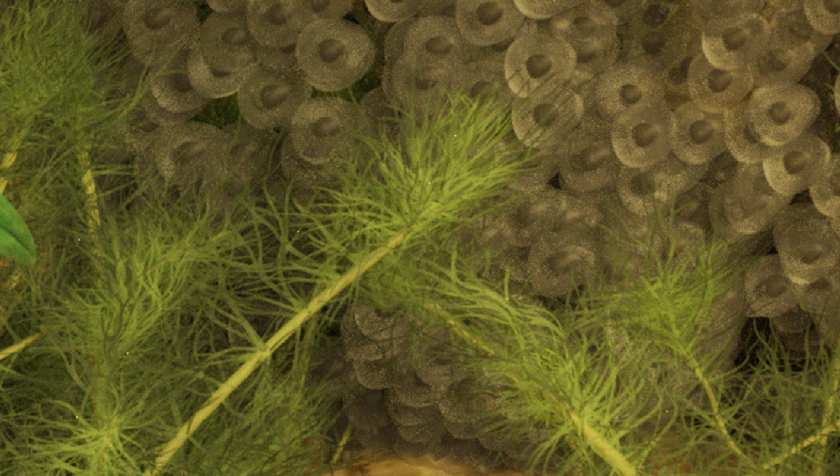
Hornwort (Ceratophyllum demersum) and other submerged plants are important for releasing oxygen into a pond as they photosynthesise. To maximise this process, direct sunlight needs to reach the plants.
© Stuart Jackson-Carter/www.sjcillustration.com
Plants have also adapted to pond life.
The abundance of water means some aquatic plants have abandoned conventional root structures - for example, hornwort only has stems and feathery leaves.
Floating plants such as water lilies use the water's surface to support large leaves that can be kept well away from the shadow of plants around the water's edge.
Water soldiers change the amount of gas in their leaves to sink to the bottom of the pond over winter and then rise up to the surface in summer to flower.
Emergent plants are rooted to the bottom of the pond, but their stems and leaves stick out of the water. Marginal plants grow in damp conditions at the edges of ponds and can cope with rising and falling water levels, even able to spend some time totally submerged.
Some emergent and marginal plants circulate extra oxygen to the silt around their roots to kill anaerobic bacteria and avoid deadly anoxic conditions.
Yellow flag irises have swollen, water-storing stems that allow the plant to survive even if a pond temporarily dries out.
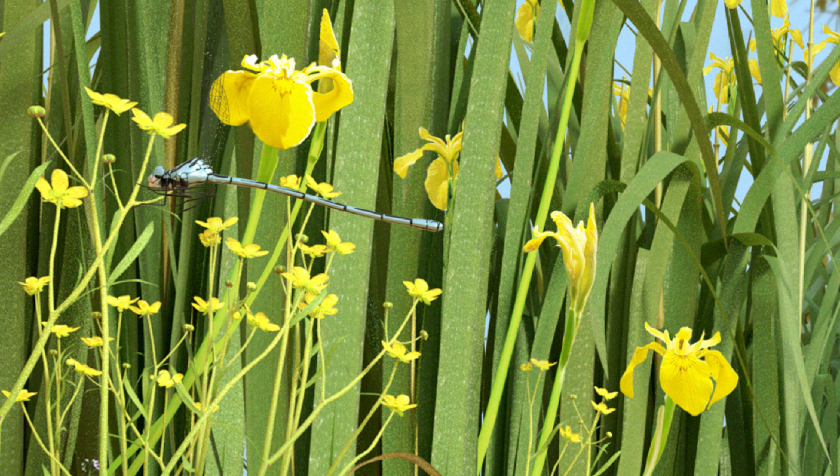
From May to August, yellow flag irises (Iris pseudacorus) add splashes of colour around the ponds where they grow.
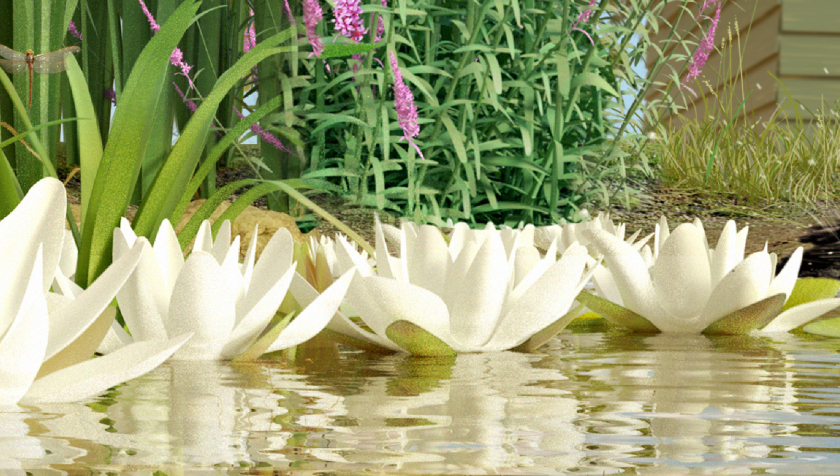
White water lilies (Nymphaea alba) provide food and shelter for water snails. Their large flowers bloom from June to August.
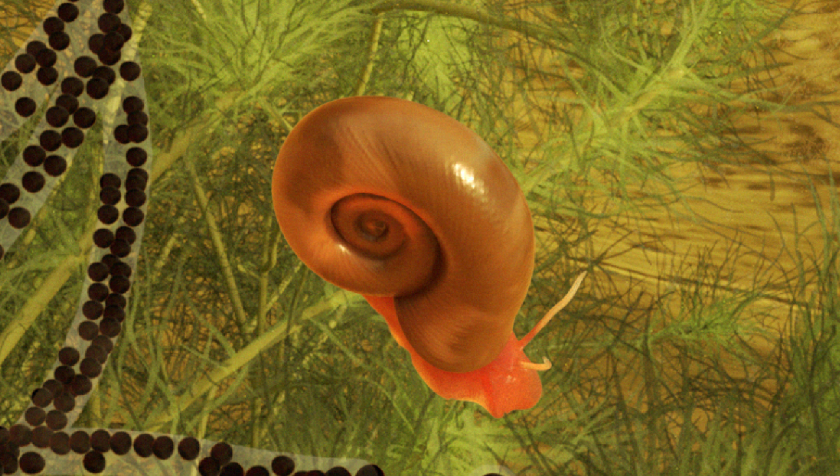
Great ramshorn snails (Planorbarius corneus) eat algae, scraping it off rocks with a tongue which has embedded teeth. The red tinge of their shell is caused by haemoglobin - the same substance that colours our blood.
© Stuart Jackson-Carter/www.sjcillustration.com
Many aquatic plant species provide micro-habitats for invertebrates, amphibians, birds and mammals. For example, marginal plants such as reeds, rushes, yellow flag iris and water mint provide shelter for amphibians. Floating plants such as water lilies provide places for damselflies to lay their eggs. Submerged aquatic plants such as hornwort and water starwort provide food and shelter for water snails.
The history of ponds: how does this habitat form and change over time?
Ponds were around long before humans, so how did they arise naturally?
In the past, without human influence (but possibly with help from the odd beaver or other ecosystem engineer), rivers rarely stayed on the same course for long. Instead, they meandered, flooded and left pools as they changed their route.
Geological features (such as dips or hollows in rocks or soils that can hold water) can create ponds, as can the movement of glaciers. They are part of bog and fen landscapes too.
Humans have also created many ponds throughout history, especially when raising livestock in areas that do not naturally collect water, such as on chalk hills - these are known as dew ponds. Other artificial ponds include defensive moats, fish ponds, and mill ponds. They can also form where clay, sand and gravel are dug out for use as building and road surface materials.
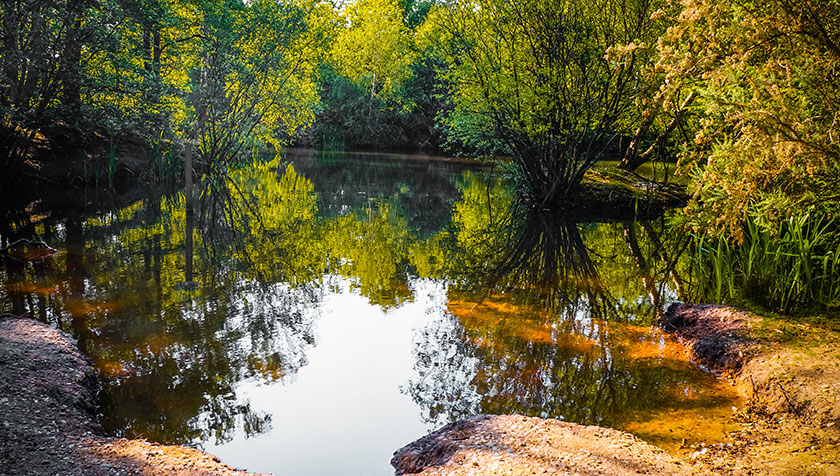
A woodland pond
© FreedomFungPhotography/ Shutterstock
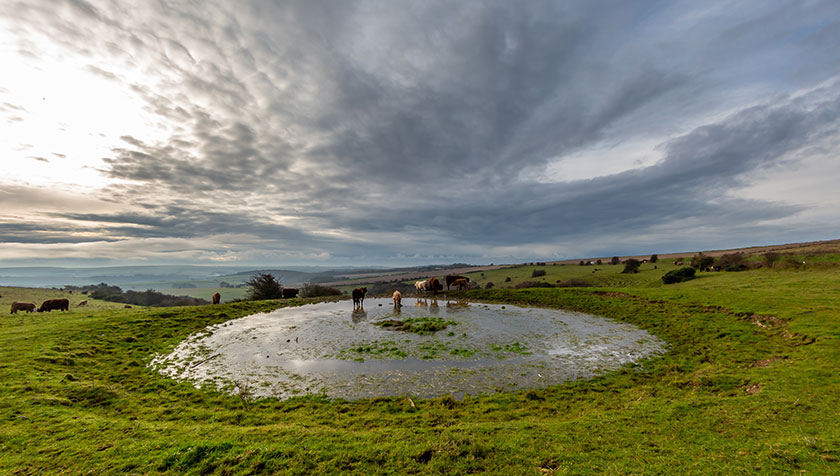
Cattle drinking at a dew pond
© Melanie Hobson/ Shutterstock
Over time, natural processes usually fill ponds through gradual silting over and encroaching growth of non-aquatic vegetation. This is called succession.
Threats to ponds and pond life and how you can help
Pond organisms are well adapted to the transient nature of this habitat. They have methods of dispersing to new ponds over land or air. Many have wings or can crawl between ponds on cool damp nights. Some even hitch rides on more mobile species.
Unfortunately, however, many pond creation mechanisms have stopped. Rivers are dredged and channelised, bogs and fens are drained, and farmers use troughs and mains water. Yet succession continues and many ponds are being filled in on purpose or overtaken by invasive plants, so pond species have nowhere to go.
Many ponds are being polluted with harmful pesticides, fertilisers or soil running off fields.
Throughout the UK, pond habitat is being destroyed or degraded. Creating or maintaining a pond in your garden is one way to help reverse this trend.
Find out how to create a small wildlife pond >
A version of this article was published in the June 2021 issue of our Members' magazine, Evolve.
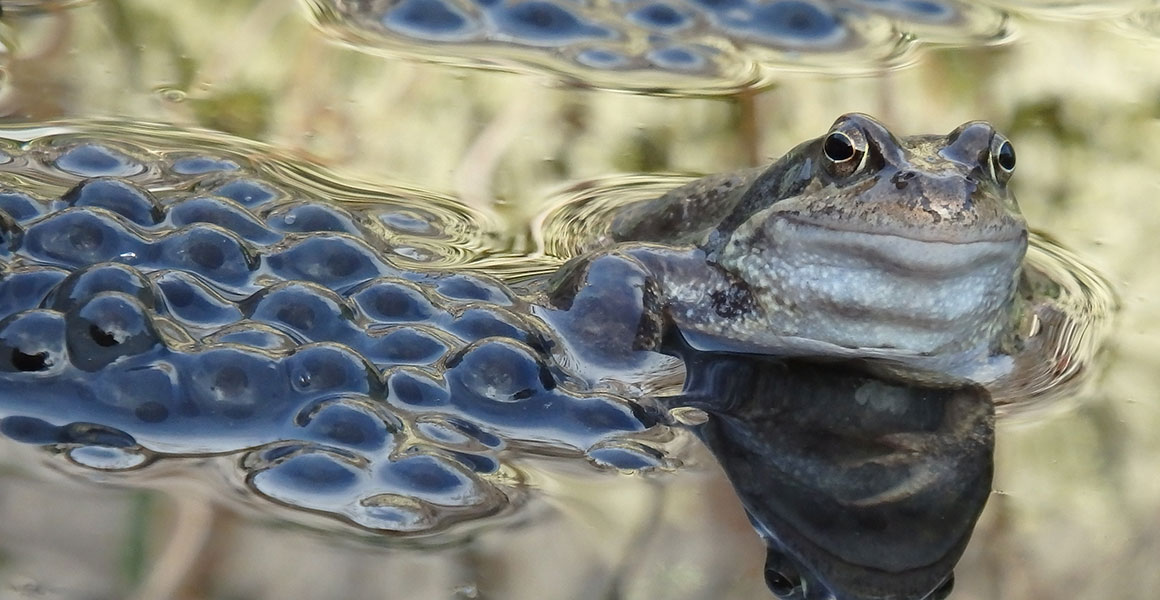

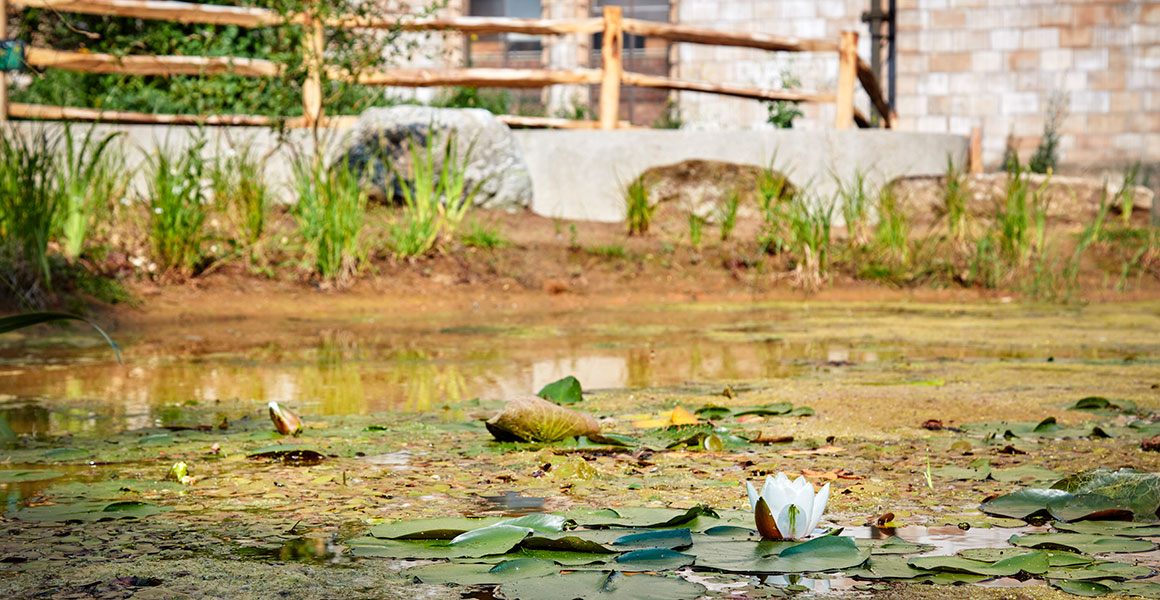

Don't miss a thing
Receive email updates about our news, science, exhibitions, events, products, services and fundraising activities. We may occasionally include third-party content from our corporate partners and other museums. We will not share your personal details with these third parties. You must be over the age of 13. Privacy notice.
Follow us on social media